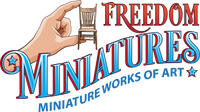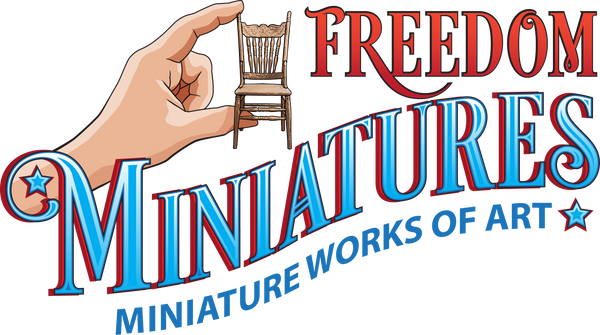
Flooring Ideas
A question we are often asked is “what can I use to make floors?”. There are a number of options, some pretty obvious, others maybe not so much. Here are a few ideas – from those you can purchase, to those you can make. Use your imagination and see what you can find.
Ready Made - Wood
- Purchase sheets of flooring where the flooring pattern is printed on vinyl, plastic or paper. These are easy to glue in place and can be cut to the dimensions of your room. Options include wood boards, wood patterns (ie parquet), tiles and even brick.



- Sheets of wood flooring, with a paper backing, are also available for purchase. These come in a good range of wood types and board widths. They can be easily cut to fit your floor dimensions and then stained or painted.



Do-It-Yourself - Wood
Staying with the idea of wood floors for a bit:
- Popsicle sticks, tongue depressors, coffee stirrers – a tried and true way to make a wood floor. Cut the sticks into random lengths and place with glue. Weighting the floor while the glue dries is important here. You can also add some realism by marking the end of each board with small dots to represent the nails. Don’t forget to leave a wee bit of space between floor boards here and there if you want an older floor look. Explore creating more elaborate patterns as well!


- Have you ever thought of using placemats for flooring? There are a variety of styles of placemats, most made with some type of bamboo, that can make a great flooring. Most require you to separate the bamboo strips from a backing and/or other decorative elements. Once you do that, you have an inexpensive supply of boards. Many won’t need any finishes applied. Look for placemats like these at second hand stores and yard sales.




- Another source of flooring is wood edging – normally used to edge plywood. While this isn’t necessarily a good option for narrow board floors, it could be just what you need for a barn board type of look. Follow the manufacturers directions for application or apply with a good glue and weights.

- Strips of veneer make great floorboards as well – although they can be hard to find ready-made and even harder to cut into appropriate widths. But if you can find them, hoard them…lol.

- Finally for wood floors – I have seen bead-and-board sheetwood used for flooring and it is very effective as well. In short, look at anything wooden and see what you can make out of it.

Ready-Made – Non-Wood
- Carpet – you can buy dollhouse carpet in a wide range of colours. You can also explore your local fabric store or second-hand shops for options.

- Cobblestone or stone tile – experiment with painted egg carton to achieve the colours you want and then cut, or tear, the egg carton material into appropriate sizes. Apply to the floor with glue and seal the finished product. Don’t forget to paint the surface onto which you are gluing the tiles/stones a complementary colour so you don’t have an unexpected white (or other undesired colour) peeking through between the stones.

- Cement or other poured type floors – play with crack filler to create textured finishes. There are also products available to make a painted surface look like concrete.
General Flooring Information
- Most of the time, you will need to apply weight to the floor while glue dries. You can use heavy books or bags of sand (a very handy option – just make sure the bag doesn’t have a hole…).
- You can lay the floor directly in the dollhouse or roombox or diorama – or you can create a template of the floor and work outside the structure. Glue your flooring material to the template and then glue the finished floor in place as one piece. An advantage of using a template is that it is easier to weight the floor while the glue dries.
- Finishing flooring – wood floors can be stained, varnished, aged, weathered, worn down, dirtied or made exceptionally smooth and clean. Don’t under-estimate the value of spending some time sanding your flooring.
- Aged floors should be darkest around the edges where they meet the walls. Dark floors will be lighter where there is heavy traffic and light floors will tend to have a darker track (the dirt would make the light wood darker).
Comments
Excellent advice, and I especially appreciate the finishing tips you added at the end. All those little wear-and-tear details would make it look very realistic!

